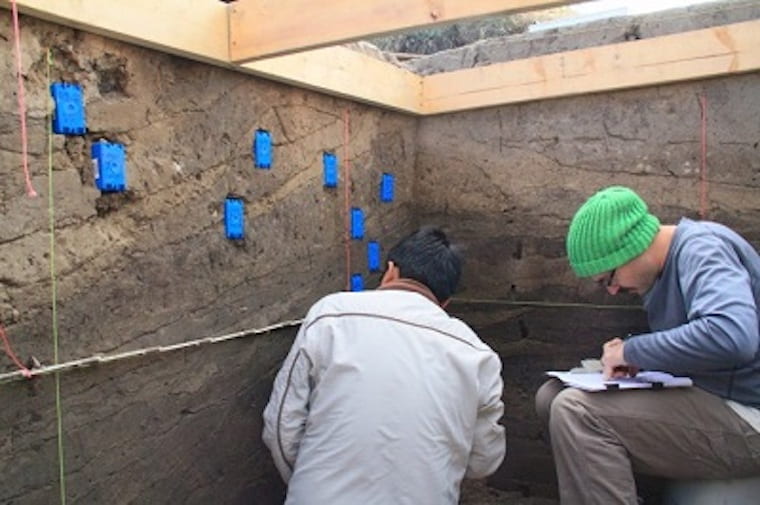
Adena Landscapes Project
The Adena Landscapes Project is a broad effort to assess how and why groups of people interacted in specific landscape settings approximately 800 BCE to 250 CE in the Middle Ohio River Valley of Eastern North America. The focus of the research is a series of Early and Middle Woodland sites spread across the Bluegrass Region of Central Kentucky.

China Plain Ancient Landscape Survey
As part of the Sanyangzhuang project, we are conducting a survey for ancient landscapes in the area buried by past flood events.

Climate Change and Human History in the Mississippi River Valley
The Mississippi River floodplain is a highly active, constantly evolving landscape. Research on the relationships among Mississippi River landscape evolution, climate change, and human history has been a centerpiece of the Geoarchaeology lab.

Geoarchaeological research in Uzbekistan
The Malguzar Mountains in southeastern Uzbekistan are a key region for understanding the history and dispersal of mobile pastoralist populations in highland territories of Inner Asia, as well as how interactions between pastoral and agricultural societies have shaped Eurasia from the Bronze Age to the present.

Geoarchaeology at Cahokia, Illinois
The Geoarchaeology Lab at Washington University in St. Louis is involved in ongoing research into the organization of the human built and modified landscape at Cahokia, a UNESCO World Heritage site east of St. Louis. In 2007 we undertook excavations on the east face of Monks Mound as part of a large-scale conservation effort.

Geoarchaeology at Jaketown
Research at the site has helped reveal the extremely high degree of organizational complexity attainable by hunter-gatherer societies and expanded our conceptions of the variable social and economic configurations expressed by groups that rely on hunting, fishing, and collecting for their subsistence.

Geoarchaeology in the Semirech’ye Region, Eastern Kazakhstan
Lab members are involved in a long-term project exploring the geoarchaeology and landscape archaeology of pastoral peoples within the Byan-zhuyek Valley. This is part of the larger Dzhungar Mountain Archaeology Project (DMAP) coordinated by Professor Michael Frachetti. Our research focuses on understanding site formation processes and their relation to landscape evolution.

Poverty Point
We have been working at the Poverty Point site since the late 1990’s—first mapping and then doing coring and excavation. Research has been devoted to exploring the chronology, history, and social context of the earthworks at Poverty Point.

The Sanyangzhuang Project: China
The Yellow River valley is the cradle of Chinese civilization and has been a major focus of recent archaeological research. The Sanyangzhuang project is focused on understanding floodplain evolution and its relation to flooding and culture history during the last 3500 years in the Central Plains.